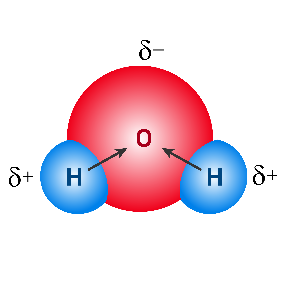I choose capacitive sensors every day to solve application challenges in the life science and semicon industries. Capacitive sensors in life science reliably detect liquid levels of reagents, buffers, and all manner of biological substances. In semicon, capacitive sensors are in wide use in “wet” processes, such as monitoring liquids in etching and deposition tools.
 In standard Industrial applications, capacitive sensors detect plastics and liquids, and although they can also detect just about anything else, there are better alternatives keeping them from becoming the “one sensor to sense it all.” When sensing metals, for instance, an inductive sensor is the better choice (for cost, safety, and other reasons).
In standard Industrial applications, capacitive sensors detect plastics and liquids, and although they can also detect just about anything else, there are better alternatives keeping them from becoming the “one sensor to sense it all.” When sensing metals, for instance, an inductive sensor is the better choice (for cost, safety, and other reasons).
Furthermore, special patented capacitive sensors exist for stubborn liquids. These sensors can ignore foam and/or the presence of material coating the inner walls of containers, which can lead to false triggering with standard sensors. These smart capacitive sensors use the slight conductance of the liquid to cleverly provide a more precise and reliable liquid level reading.
So, although capacitive sensors can sense just about anything, they are mostly relegated to sensing non-metallic objects and liquids.
How capacitive sensors work
Contrary to the common belief that capacitive sensors work based on density to detect a target, they operate on a different principle. While it may seem logical that targets being denser than air would be the basis for detection, understanding the actual working mechanism of capacitive sensors might save us some application grief.
Capacitive sensors create an electrostatic field between two conductive plates, similar to a capacitor; but rather than the plates opposing each other as in a capacitor, a capacitive sensor has plates side by side. In either case, the mathematical formulas are the same, with only the area of the plates, distance, number of plates, and the εr of the material as the variables.
What is εr?
εr is the relative permittivity of the material to be sensed, also known as the dielectric constant. When speaking of relative permittivity or dielectrics, we are speaking of materials that do not readily conduct electricity, materials called insulators. The dielectric constant (K) is a ratio of a substance compared to the dielectric constant of a vacuum, where K=1. With capacitive sensors, we typically use air as the starting point, with K=1.00059, which is close enough for our purposes. Capacitive sensors trigger an output when an object with a higher K than air is sensed in the electrostatic field. But first, we must interact with the target material, which is where the “K” becomes important.
Relative permittivity is a measure of how easy/difficult it is to polarize a substance (as a ratio to a vacuum which equals 1). Polarizing is acccomplished by placing matter in an electrostatic field, which causes the molecules of the matter to rotate, lining up with the field. The easier the matter lines up, the higher the K value.
So, a capacitive sensor works by polarizing the target material, which in turn creates a higher capacitance in the sensor’s circuitry. Internal to the sensor is an oscillator or generator (to create the electrostatic field), comparators, op-amps, etc. These components determine if the internal capcitance of the circuitry has changed enough to trigger an output.
Typical dielectric constants (K):
Air = 1
Plastics = 2-3
Concrete = 4.5
Glass = 5
Rubber = 7
Water = 80!

Why is water so easy to polarize? Because it’s already a “polar” molecule.
Due to the hydrogen bond, each water molecule is already a tiny magnet, with a slight positive on one end and a slight negative on the other. When placing water in an electrostatic field, the water molecules easily align with the sensor’s plates, with the plus side of the water molecule pointing towards the negative plate of the sensor, and the minus side of the molecule pointing to the positive plate.
In the end, the density explanation doesn’t hold water, since glass is much denser than water, but it is water, due to how easily it can be polarized, that is easier for a capacitive sensor to recognize. Not to say that a capacitive sensor cannot sense glass, because they can sense just about any material, but with such a difference in dielectric constants between water and glass, the sensor gain (trimpot or teach wire) can be adjusted to reduce the sensitivity of the sensor, to ignore the glass/plastic container, and only sense the water based media inside. Make sense?
Capacitive sensors work by:
- Polarizing the target media as it enters the sensor’s electrostatic field
- Measuring the internal increase in capacitance due to the polarized media
- Creating an output once the set threshold of internal capacitance is exceeded
So next time you’re looking to sense an object or liquid, take a look at a table of dielectrics, and consider a capacitive sensor to do the job.
